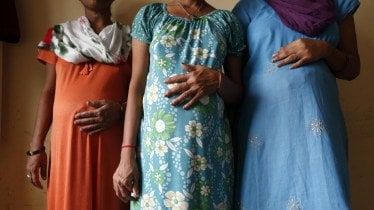The Indian Medical Association chief has called for legalising foetal sex detection tests. Banasree Purkayastha looks at the provisions of the Pre-Conception and Pre-Natal Diagnostic Techniques (PC-PNDT) Act, convictions under it and whether it has helped arrest the declining sex ratio
What has the IMA said?
Indian Medical Association (IMA) president Dr RV Asokan has called for amending the PC-PNDT Act to legalise gender determination tests, arguing that a ban on sex determination tests has not significantly impacted India’s skewed sex ratio. Questioning the efficacy of the law in stopping female infanticide, he has said that some provisions of the Act wrongfully harass the doctor and the law must be amended. As per an Indian Express report, Dr Asokan has said that the IMA is aggrieved over certain rules in the Act and with doctors being pulled up for technical lapses and incorrect filling of forms. “Not filling up Form F (under the PC-PNDT Act) is considered to be equal to female foeticide,” he said. Form F records the medical history of a pregnant woman and why the ultrasound is being done. Doctors not filling up Form F properly are given the same punishment as someone who does a sex determination test.
Arguing that a social evil cannot always have a medical solution, the country’s top doctors’ association has instead suggested that legalising gender detection could help protect the unborn girl children by tracking the pregnant women to ensure that the foetuses are carried to full term.
What has been the IMA’s stance all along?
The IMA had first protested against the PNDT Bill in 1991. The Bill was then referred to a Parliamentary committee which decided not to include ultrasound tests in the proposed law. However, with women members of the Communist parties and BJP opposing it, the Bill finally included ultrasound and was enacted in 1994. Radiologists in 2002, IMA in 2015 and gynaecologists and obstetricians in 2017 have unsuccessfully appealed to the courts for dilution of the law.
Varsha Deshpande, member of the National Inspection and Monitoring Committee, however, says the law is serving its purpose. “If the IMA is worried about the Act, then let it expose the wrongdoers in the medical fraternity. Expose your own members and take disciplinary action against them,” she told Indian Express.
What does the PC-PNDT Act say?
The main purpose behind enacting the Act was to ban the use of sex selection techniques after conception and prevent the misuse of prenatal diagnostic techniques for sex-selective abortions. The Act mandates compulsory registration of all diagnostic laboratories, all genetic counselling centres, genetic laboratories, genetic clinics and ultrasound clinics, besides written consent of the pregnant woman and prohibition on communicating the sex of the fetus and maintenance of records.
Any non-compliance of the Act in any manner, even the smallest of an error, penalises all the persons either involved in sex determination or non-maintenance of records. Besides sealing of ultrasound machines in case of any alleged violation, criminal prosecution also brings in suspension and cancellation of registration granted by the State Medical Council, the main grouse of the doctors.
Has the sex ratio improved?
Sex detection tests have been most popular in Punjab, Haryana, Delhi, Maharashtra and Gujarat. It was only after the 2001 Supreme Court judgment that ultrasound clinics started being registered. Census 2001 indicated that child sex ratios in Punjab plummeted to 798 girls per 1,000 boys from 875 in 1991. Haryana’s sex ratio at birth (SRB) of 834 was the lowest in the country as per the 2011 Census. Its efforts to stop sex determination eventually led to the first conviction in 2006 under the Act. The ‘Beti Bachao, Beti Padhao’ campaign launched in 2015 has also helped arrest the decline. In 2022, Haryana submitted to Supreme Court that its SRB had improved to 917. A Lancet study (2021) estimated that 135 lakh Indian girls were killed before birth over 1987-2016. in the country. On an all-India basis, the SRB has improved by 15 points from 918 females for every 1000 males in 2014-15 to 933 in 2022-23 in the country. A Parliamentary committee report put the number of convictions under the Act at 617 till 2020.
If the law is amended, who will be responsible for the monitoring ?
Assuming that the strict provisions in the Act are watered down, and sex determination is allowed, the first question is who will ensure that the female foetus is carried to full term. Here also, maintenance of records will be required. And then, what is the guarantee that records will not be tampered with or wrong details will not be entered? Shifting the onus of monitoring on the angadwadi worker is unlikely to work; monitoring 80,000 clinics is tough, tracking 27 million pregnancies every year is well-nigh impossible. With illegal abortions happening even now, any change in law will only push up their number. Clandestine induced abortions are a public health problem in many developing countries where access to abortion services is legally restricted, putting the life of the mother as well as the child in danger.
